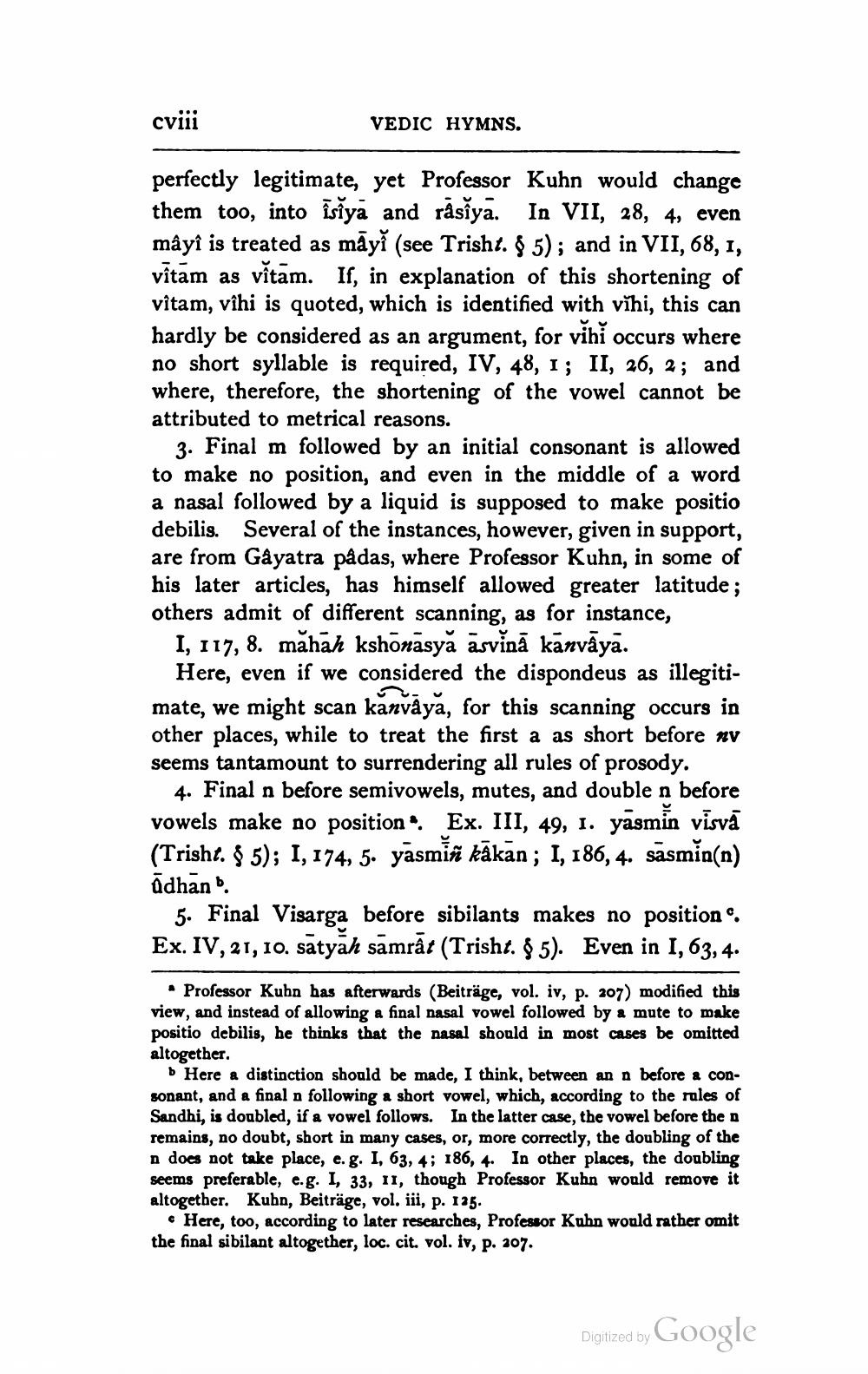________________
cviii
VEDIC HYMNS.
perfectly legitimate, yet Professor Kuhn would change them too, into isiya and råsiya. In VII, 28, 4, even mâyî is treated as māyi (see Trisht. § 5); and in VII, 68, 1, vītam as vítām. If, in explanation of this shortening of vitam, vihi is quoted, which is identified with vìhi, this can hardly be considered as an argument, for vihi occurs where no short syllable is required, IV, 48, 1; II, 26, 2; and where, therefore, the shortening of the vowel cannot be attributed to metrical reasons.
3. Final m followed by an initial consonant is allowed to make no position, and even in the middle of a word a nasal followed by a liquid is supposed to make positio debilis. Several of the instances, however, given in support, are from Gayatra pâdas, where Professor Kuhn, in some of his later articles, has himself allowed greater latitude; others admit of different scanning, as for instance,
I, 117, 8. mahah kshönasyā āsvinā kanvāya.
Here, even if we considered the dispondeus as illegitimate, we might scan kanvāya, for this scanning occurs in other places, while to treat the first a as short before av seems tantamount to surrendering all rules of prosody.
4. Final n before semivowels, mutes, and double n before vowels make no position". Ex. III, 49, 1. yasmin visvā (Trisht. $ 5); I, 174, 5. yasmiñ kākan; I, 186, 4. sasmin(n) ūdhān.
5. Final Visarga before sibilants makes no position. Ex. IV, 21, 10. sātyah samrāt (Trisht. $ 5). Even in 1, 63, 4.
• Professor Kuhn has afterwards (Beiträge, vol. iv, p. 207) modified this view, and instead of allowing a final nasal vowel followed by a mute to make positio debilis, he thinks that the nasal should in most cases be omitted altogether.
• Here a distinction should be made, I think, between an n before & consonant, and a final n following a short vowel, which, according to the rules of Sandhi, is doubled, if a vowel follows. In the latter case, the vowel before the o remains, no doubt, short in many cases, or, more correctly, the doubling of the n does not take place, e.g. I, 63, 4; 186, 4. In other places, the doubling seems preferable, e.g. I, 33, 11, though Professor Kuhn would remove it altogether. Kuhn, Beiträge, vol. iii, p. 125.
• Here, too, according to later researches, Professor Kuhn world rather omit the final sibilant altogether, loc. cit. vol. iv, p. 307.
Digized by Google




